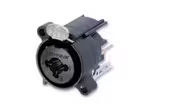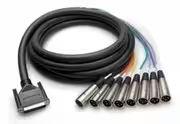Luci_Musix2003
New member
If I had a 8 input plate with 8 XLR/TRS combo neutriks (which all come open and requiring soldering) how would I be able to connect them to a DB25 Cable?
I know you can get a DB25 to XLR (or TRS) which splits off into 8 channels, but for each of the tendrils, the wire looks too narrow to cut open and attempt soldering surgery on, and at a price between 50-80 I don't want to waste buying one in order to find out.
I could wire the neutrik onto an XLR cable and then connect the XLR and the adjoining end of the DB25 cable to each other, but that runs the risk of the cable changing affecting the sound and its just more places for stuff to go wrong. Ideally if there is a way to connect the Neutriks directly to an 8 channel split DB25 cable that would be perfect, but I don't know how realistic that is.
Let me know if you guys know any cool solutions
I know you can get a DB25 to XLR (or TRS) which splits off into 8 channels, but for each of the tendrils, the wire looks too narrow to cut open and attempt soldering surgery on, and at a price between 50-80 I don't want to waste buying one in order to find out.
I could wire the neutrik onto an XLR cable and then connect the XLR and the adjoining end of the DB25 cable to each other, but that runs the risk of the cable changing affecting the sound and its just more places for stuff to go wrong. Ideally if there is a way to connect the Neutriks directly to an 8 channel split DB25 cable that would be perfect, but I don't know how realistic that is.
Let me know if you guys know any cool solutions



